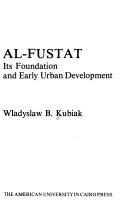Mapping Liquid Waste In Quseir
Gamila Ehab Mohamed [And Three Others].

Overview
This research was initiated through a historical study of the city of Al-Quseir as one of the cities belonging to the Red Sea Governorate and the importance of its strategic location as it is rich in elements of tourist and economic attractions, it was also an arrival point and transfer of pilgrims from the Red Sea. And it continued to flourish until the city turned from a commercial port to an industrial port and the phosphate company was established until nationalization took place. The city resorted to the tourism development model after the collapse of the industrial sector and the unemployment increase in the city. Now we find that the work sector depends on the service sector. Countries are keen to find solutions for the urgent environmental problem of managing liquid waste. The idea's fundamental goal is to guarantee an economically and environmentally sustainable system. The lack of adequate sanitation facilities led to defecation in open fields and the discharge of raw liquid waste in inappropriate locations, both of which have led to major environmental issues. This paper contributed to mapping liquid waste generation and disposal points in Quseir, which is currently functioning on cesspools which are underground holding tanks, serving either one or a group of adjacent buildings depending on their size. however further investigation and data collection are required for the completion and validation of most information on the problem of municipal liquid waste, according to daily consumption of the city's residential, educational, commercial, industrial, or resorts according to CAPMAS. And how to get rid of sewage waste and current drainage methods in the city and the extent of difference in disposal between them and the tourist resorts in the city, according to data collected from statistical analysis and field visits. Finding weaknesses and gaps that must be resolved to avoid environmental problems that change the nature of the city. As Quseir has no access to a direct clean water source, it mainly depends on treated sea water from desalination plants. There are three Desalination plants within the administrative boundaries of Quseir. The disposal of the effluent greatly impacts the salinity of the soil and consequently the seawater itself, thus negatively impacting the seawater quality and marine life. Brine water, on the other hand, is the greater issue in Quseir due to the amount generated, almost 60% of the total liquid waste of Quseir, as well as its properties and chemical composition in comparison to domestic waste. With the increase in population and water demand with an arid climate and lack of a freshwater supply Quseir is majorly dependent on desalination plants as the main source of its water. In fine, Quseir's current infrastructure has been neglected for a long time and urgently needs to be improved and repaired, especially the sewage and water delivery system. As the wastewater treatment facility is still being built, the collection and disposal of sewage will depend on cesspools and leaching methods. As a result, whether on-site or beyond the city in the valley by waste trucks, wastewater is immediately dumped into the ground without treatment, damaging the land and groundwater. resulting in a significant risk of health risks because of this contamination.



















